In a world where greenwashing (when brands promise to be cleaner than they really are) is as common as avocado toast, it seems like personal care certifications could be The Answer. What could be easier than scanning a tube of lipstick for a simple symbol that reassures you of its ingredient safety, environmental friendliness and responsible packaging?
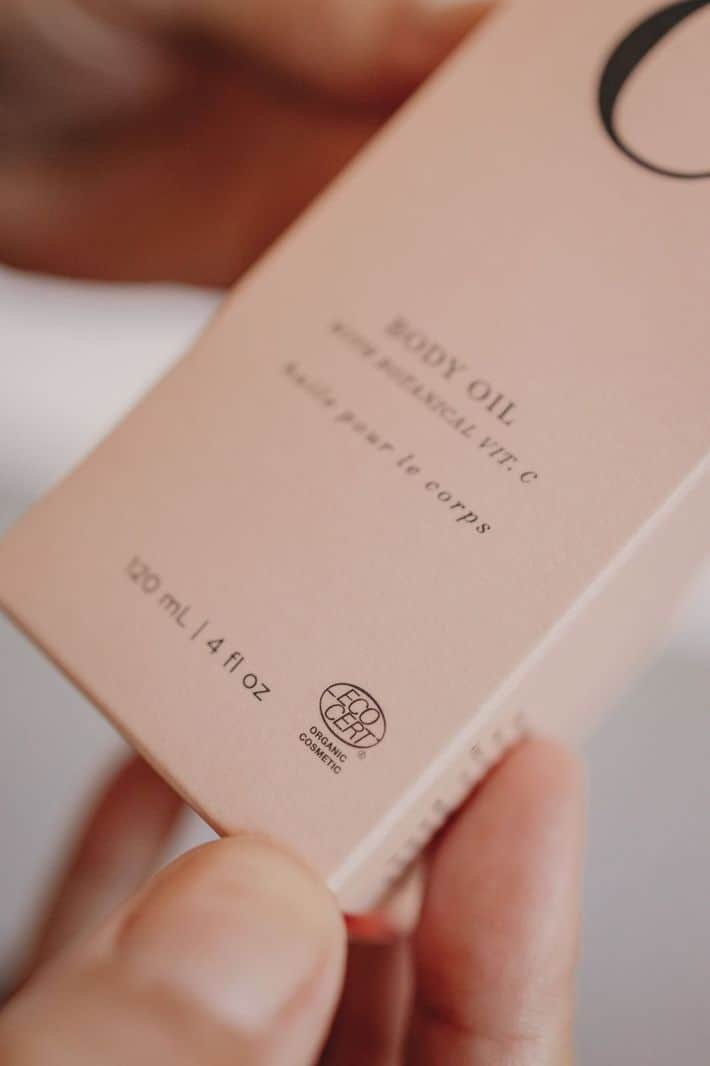
Research and Consulting By: Krupa Koestline.
Written By: Lisa Fennessy and Nicolle Mackinnon, with support from Emily Barth Isler.
Graphic Design By: Claire Molyneaux.
IN THIS POST:
- Glossary of terms / working definitions
- Certifications and standards overview
- COSMOS ORGANIC and COSMOS NATURAL
- EWG VERIFIED™
- MADE SAFE®
- USDA Organic
- NSF International
- European Union Reach Program
- Retailer-specific standards overview
- Whole Foods
- Clean + Planet Positive and Clean at Sephora™
- Credo Beauty
- BeautyCounter
- Certifications pocket guide
- Our research process + how we picked which certifications to highlight
- Why you should trust us
Unfortunately, it’s not that simple. Even the most educated better beauty consumer can feel overwhelmed by the world of certifications (TBH, the TNK team feels that way too, and we’ve been working in this industry for more than a decade).
Why? Because there isn’t much clarity. For a practice that’s meant to bring transparency and accountability to a largely unregulated industry, those little symbols like MADE SAFE®, EWG VERIFIED™ and COSMOS can sometimes make things murkier.
But it’s not for lack of trying. There is so much valuable shorthand information an informed consumer can get at a glance from a well-respected standard. And there’s certainly a sense of inner peace that can come with buying a new moisturizer that dons a third party seal of approval.
The issue lies in the fact that each standard has its own definitions, accreditations, prohibited processes, prohibited ingredients and checks and balances. So understanding what one standard means doesn’t translate across the board. Plus, some standards have regulatory bodies; others don’t. Some standards review a brand’s production process; some just review submitted ingredient lists. And the either / or list goes on and on.
Since there’s no definitive shortcut nor collective agreement as to which certification is “the best,” we decided to take a more discerning look at the most popular certifications, and weigh the pros and cons ourselves. But hey, that’s not easy either. So in an attempt to make it a bit more digestible, we created this guide to help break down the details on some of the most widely used certifications in the United States.
Trust us: You’re gonna wanna bookmark this certifications guide.
Why? Partially because we secured the expertise of Krupa Koestline, a clean cosmetic chemist and founder of KKT Consultants, who merges her background in biology, biochemistry and biotechnology with her lifelong practice of Ayurveda to create new concepts and innovations in the clean beauty space. Starting her 10+ year career at Estee Lauder and Neutrogena, Krupa pivoted her focus to creating safer products after seeing firsthand the impact of potentially harmful ingredients used in personal care products.
RELATED: We talked to beauty brands on how they choose these certifications. Read all about it here.
As an expert resource, Krupa strives to dispel myths and misinformation around clean beauty, to see through convenient marketing tactics and buzzwords, and forecast insights into the next trendy ingredient. She’s worked with brands like Kopari, May Lindstrom Skin, Chantecaille and Tower 28 to create award-winning formulas—and she’s been our go-to expert in deciphering the world of clean beauty certifications.
Glossary of terms / working definitions
In order to make sure we’re all reading this infographic and information in the same way, let’s start out with a few working definitions for some of the terms we’ll be using.
Accreditation: Accreditations are recognitions from non-governmental third-party agencies that a certification body has met predetermined certification standards. Accreditation pertains to the certification body only and not brands or products.
Certification standard: Certifications are credentials that brands seek to prove and attest the quality of their product (like USDA, NOP, COSMOS). These are provided by a third-party certification body.
Third-party certification body (like Ecocert, QAI, Oregon Tilth, etc.): Provides a certification, which involves a manufacturing and overall brand audit on an annual basis, to ensure the brand’s adherence to the pertaining certification.
Verification: Verifications are credentials that brands seek to verify the quality of their product. The process generally involves a third-party reviewing all claims, paperwork and formulas to ensure they meet certain standards. In lieu of an annual audit, verification generally involves the brand signing an affidavit to confirm the brand’s commitment to the standard.
Certifications and standards
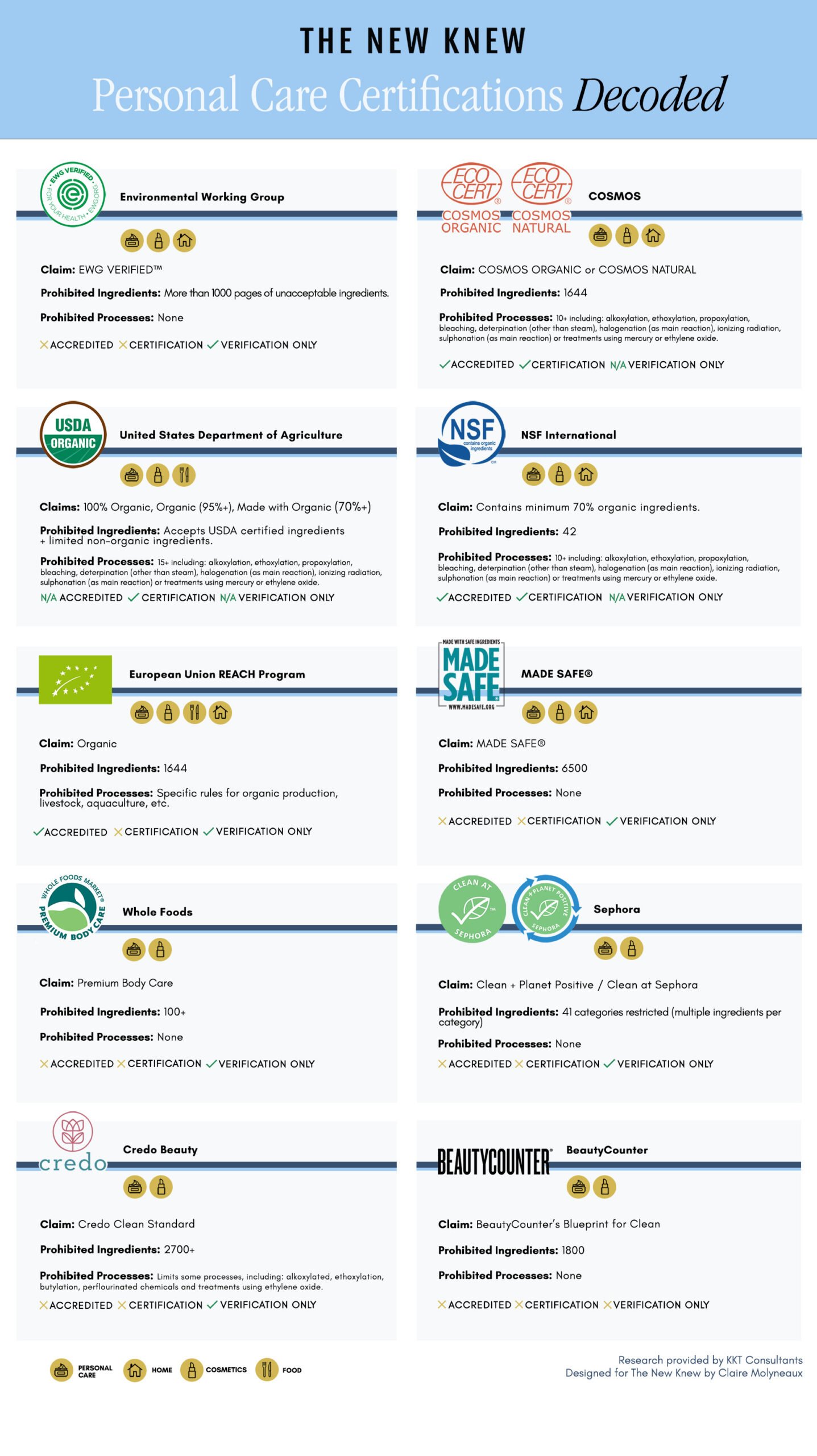
Now that we’ve made sure we’re all on the same page—let’s dive in! To start, we created a handy infographic that summarizes some of the most important info about each certification or standard (and that you can download for yourself here). It’s also a great tool to compare and contrast the logos you often see on better beauty brands. It’s not, however, exhaustive. That’s what our individual breakdown below is for.
So buckle up, because there’s a lot of (really amazing) info coming your way.
COSMOS ORGANIC and COSMOS NATURAL Certification
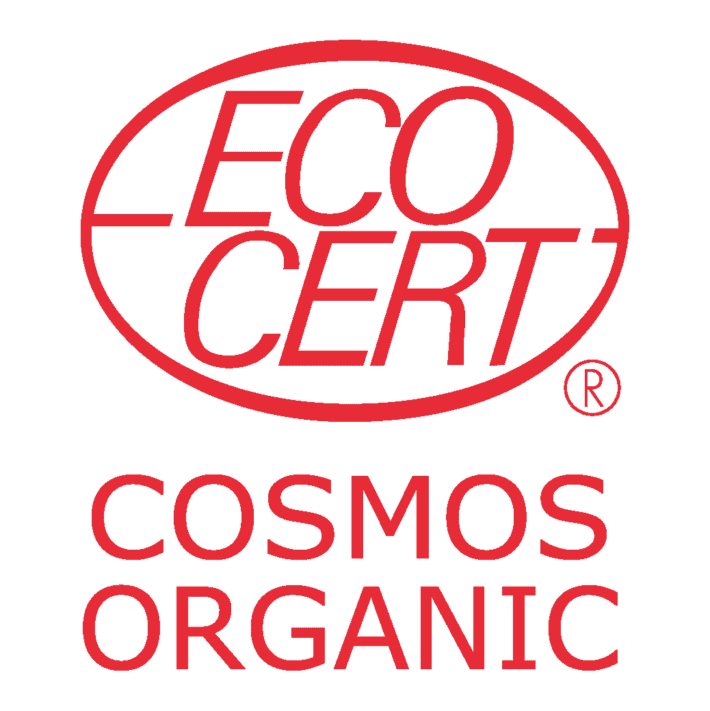
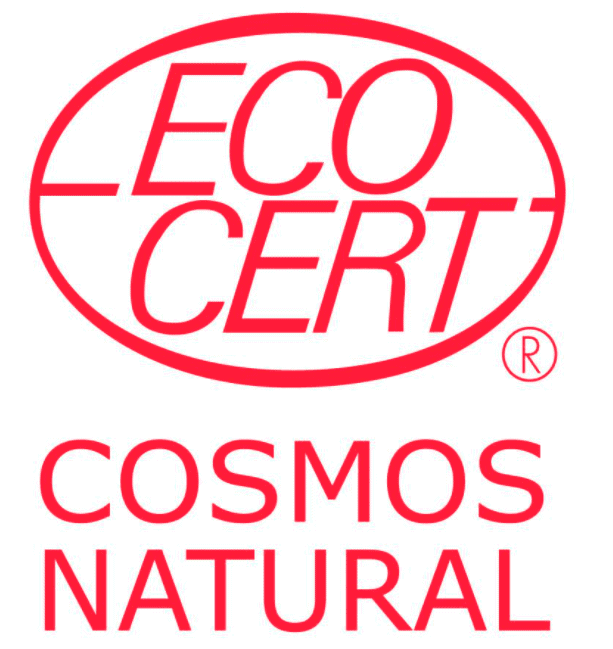
COSMOS NATURAL and COSMOS ORGANIC certifications are recognized worldwide via 22,000 products and 1800 companies, and in over 70 countries.
Here are a couple of things that stood out to us. First, there is no specific list of prohibited ingredients that is published by COSMOS, but since COSMOS complies with European Union regulations, we can technically say that 1644 ingredients are prohibited via the EU’s Reach Program restricted list.
COSMOS is one of just a few certifications we looked at that reviews and restricts cleaning materials in production facilities. If you’ve heard about benzene being found in sunscreens in amounts over the FDA recommended limit recently, one of the reasons for this is because some labs clean their machines with solutions containing benzene. Benzene can then transfer into the final product. COSMOS restricts this.
COSMOS is also the only standard we looked at that requires an environmental management plan. This ensures manufactures and subcontractors address discharge and waste management. It also requires eco-friendly packaging.
It’s also one of a few certifications that reviews the formula as a whole and not just individual ingredients.
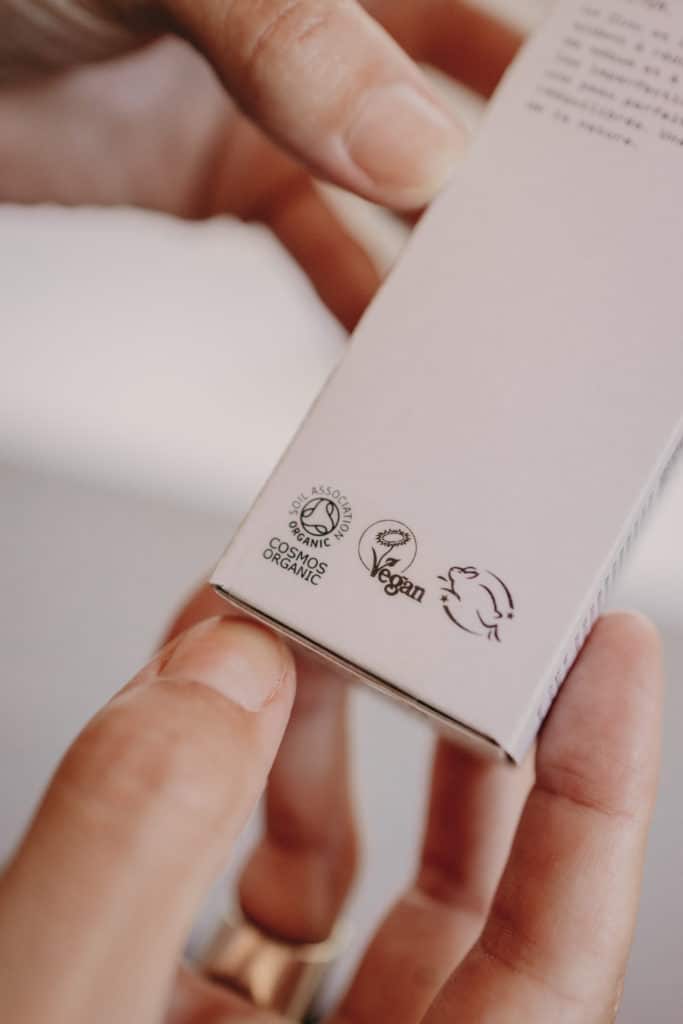
COSMOS also restricts several processes including:
- alkoxylation,
- ethoxylation,
- propoxylation,
- bleaching,
- determination (other than steam),
- halogenation (as main reaction),
- ionizing radiation,
- sulphonation (as main reaction),
- no sewage sludge or
- treatments using mercury or ethylene oxide.
Lastly, it’s important to point out that COSMOS creates space for the fact that you can’t fit a square peg into a round hole. COSMOS does this by offering two certifications, COSMOS ORGANIC and COSMOS NATURAL. They say, “[While] organic is at the heart of everything we do, we recognize that there is a demand for natural products, so to address this we also offer the COSMOS NATURAL Certification. COSMOS NATURAL products do not have to contain any organic ingredients—although in practice many do. COSMOS NATURAL is most suitable for products containing a lot of ingredients which cannot be a result of organic farming, such as water, salt or clay—for example, toners, bath salts or face masks.”
COSMOS ORGANIC and COSMOS NATURAL Strengths:
- The entire supply chain is audited from raw material to finished product.
- Independent and impartial certification bodies across 130 countries.
- No GMOs of any kind are allowed—this means no GMO starting material too (which many other certifications allow).
- Each ingredient is reviewed.
- And the composite formula is reviewed.
- Requires at least one annual on-site inspection…
- …And there are additional unannounced audits during the year.
- Samples may be taken for laboratory analysis.
- Lab reports are independently verified.
- Accredited.
- Certified.
- Several prohibited processes.
- Requires eco-friendly packaging.
- Cleaning products used in manufacturing are reviewed.
- Requires an environmental management plan.
- Recognized worldwide.
COSMOS ORGANIC and COSMOS NATURAL Weaknesses:
- No published “restricted ingredients” list.
- One of the more expensive certifications: There’s an application fee to COSMOS itself, and then there are licensing, registration and annual membership fees for brands to comply with.
EWG VERIFIED™

The Environmental Working Group (EWG) is a nonprofit, non-partisan, activist organization founded in 1993 that specializes in research and advocacy for agricultural subsidies, toxic chemicals and water pollutants. It’s also a founding member of the Campaign for Safe Cosmetics, which positioned the EWG well to venture into the verification game.
In 2015, the EWG launched EWG VERIFIED™, their “mark” for reviewed cosmetics. According to the EWG VERIFIED™ website, seeing their mark on a product means that product:
- Avoids EWG’s ingredients of concern, meaning ingredients with health, ecotoxicity and/or contamination concerns.
- Provides full transparency by meeting the EWG’s standards for ingredient disclosure on the label and disclosing fragrance ingredients to the EWG.
- And that the brand uses good manufacturing practices to further ensure the safety of their products.
EWG VERIFIED™ has been called controversial, but its ties to the widely used Skin Deep Database have helped it rise through the ranks as it can be found on well-known better beauty brands like W3LL PEOPLE and has partnerships with big beauty conglomerates like Proctor & Gamble.
One huge pro that the EWG offers in our opinion is they turn their process inside out by publishing their Unacceptable List and Restricted List. They also link to studies and points of concern for each ingredient in their Skin Deep database. This can be a useful resource for consumers as a touchpoint when doing ingredient checks.
One major thing to note is EWG VERIFIED™ is a verification process only. This means it doesn’t involve a manufacturing and overall brand audit on an annual basis to ensure the brand’s adherence to the pertaining EWG standards.
EWG VERIFIED™ is also worth keeping an eye on because as of June 2021, the EWG announced the launch of two new feeder programs for the EWG VERIFIED™ label.
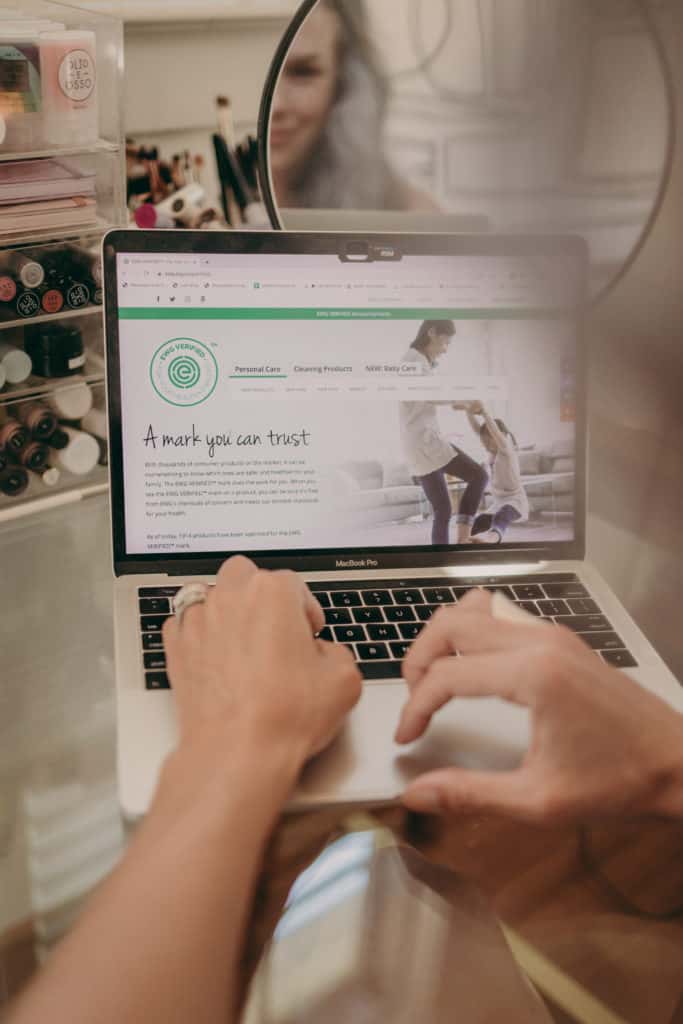
EWG VERIFIED™ Strengths:
- Published EWG Unacceptable List.
- Published EWG Restricted List.
- Ingredient classification / review with a simple to understand 0-10 rating system.
- EWG scientists review all of the ingredients in combination (the composite formula), not just assess individual ingredients.
- Seems to be more accessible to brands: There’s a $250 application fee to start, and then EWG offers a tiered sliding scale for costs, depending on the product’s revenue.
EWG VERIFIED™ Weaknesses:
- A verification, not a certification.
- Not accredited.
- No annual audit.
- No specified prohibited processes.
- No packaging review.
- Cleaning products used in manufacturing are not reviewed.
- No required environmental considerations.
MADE SAFE®
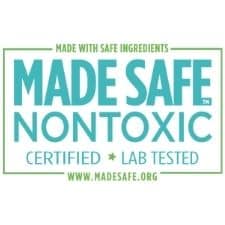
MADE SAFE® is a 501(c)(3) nonprofit that’s promoted as America’s first nontoxic seal for everyday products like apparel, baby items, cosmetics, household, intimate care, bedding and more.
The first thing that stands out here is that this program restricts the use of 6500 ingredients. This makes MADE SAFE® look crazy robust, but keep in mind that this 6,500 number is made up of ingredients spanning across all categories including personal care, cosmetics, textiles, bedding, baby items, household products and more. Basically, there are ultimately way more ingredients on the table to restrict.
To help sort all of this out, MADE SAFE® gives consumers access to their MADE SAFE® Banned List (where you can search to see if more ubiquitous ingredients are MADE SAFE® prohibited) and MADE SAFE® Hazard List, which is a user-friendly, heavily cited resource that details out ingredient concerns.
One thing to note is MADE SAFE®’s toxicant database review is proprietary. Part of this is due to the fact that they are working with over 85,000 chemicals registered to the EPA.
It’s also important to point out that MADE SAFE® is a verification process only. This means it doesn’t involve a manufacturing and overall brand audit on an annual basis from products it approves to ensure the brand’s adherence to MADE SAFE® standards.
That being said, MADE SAFE®’s goal is to “change the way products are made in this country to ultimately eliminate the use of toxic chemicals altogether.” And we are on board with that.
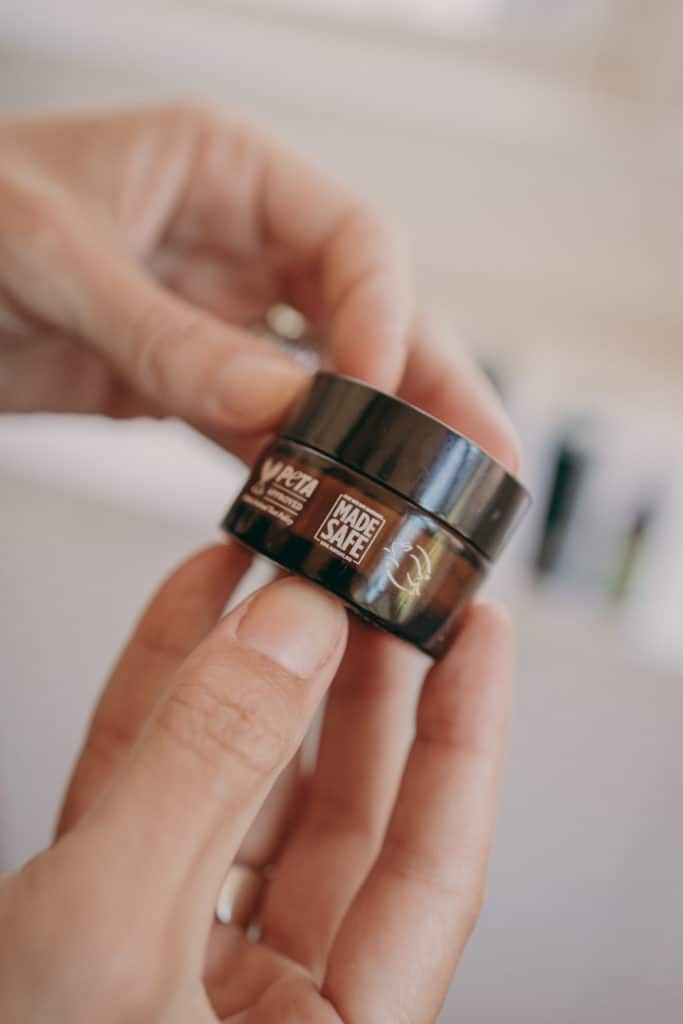
MADE SAFE® Strengths:
- Initial screening against 6500 prohibited ingredients.
- Products go through an additional proprietary toxicant database review.
- Takes into consideration the environmental impact of ingredients.
- Includes an annual compliance review for products.
MADE SAFE® Weaknesses:
- Not accredited.
- A verification, not a certification.
- Annual compliance review only requires brands to “re-confirm” their formulas—there’s no third-party audit.
- No specified prohibited processes.
- No packaging review.
- No composite formula review.
- Cleaning products used in manufacturing are not reviewed.
- Doesn’t audit product manufacturers’ environmental impact.
- Toxicant database review is proprietary.
- Fees start at $6,000 annually, for the smallest companies, based on annual revenue. There’s then an additional $600 fee per product submitted for MADE SAFE® review.
USDA Organic
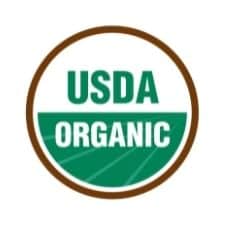
USDA Organic is primarily an agricultural standard that also allows for limited personal care products. Personal care products can be USDA Certified Organic if they are formulated with USDA Organic agricultural ingredients and “allowed non-agricultural ingredients.”
You will see three claims when it comes to this certification in the personal care space:
- 100% Organic
- Organic (95%+)
- Made with Organic (70%+)
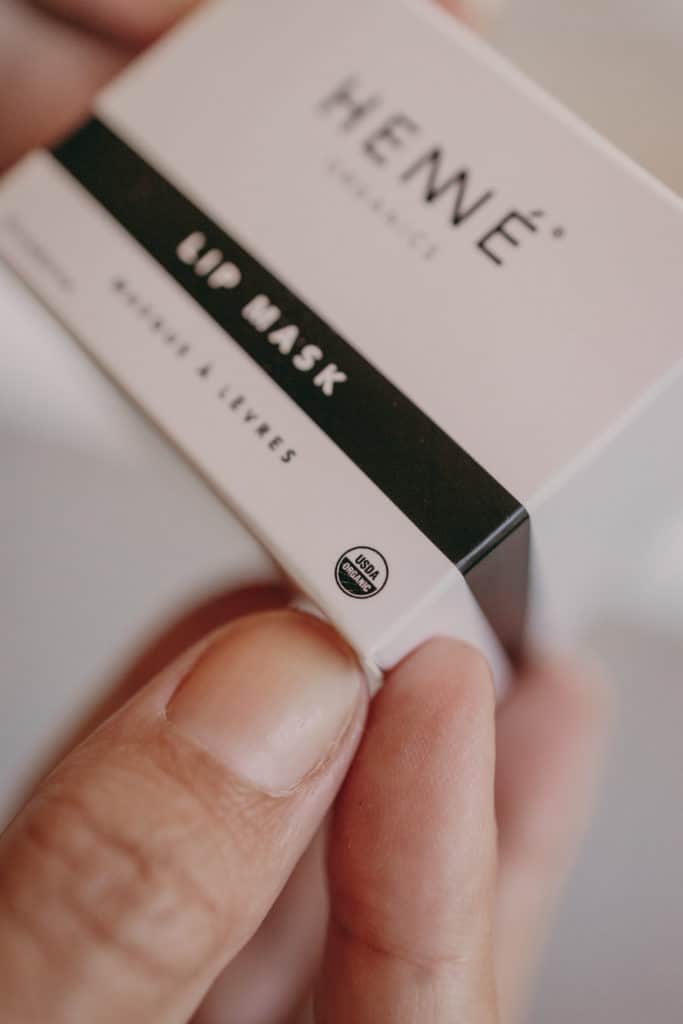
A couple takeaways here. First, personal care products should not be dinged because they are not certified USDA Organic. Getting a personal care product USDA Certified Organic is most times like trying to fit a square peg into a round hole. There are very few products that actually even qualify for certification because again, this certification was designed as a standard for agriculture, not personal care.
Which ties into the next point, that USDA Organic doesn’t technically have a published “banned ingredient list.” Initially that looks weak, but USDA Organic works differently from the rest of the certifications. What they have instead is an “allowed list.” This allowed list is super short and is a list of non-certified organic ingredients that can be used in USDA Certified Organic formulas. Everything else must be USDA certified organic.
Also worth noting, the USDA Organic Certification also prohibits several processes, including:
- alkoxylation,
- ethoxylation,
- hydrogenation,
- hydrolysis,
- esterification,
- transesterification,
- propoxylation,
- bleaching,
- deterpination (other than steam),
- halogenation (as main reaction),
- ionizing radiation,
- sulphonation (as main reaction),
- sewage sludge,
- GMOs or treatments using mercury or ethylene oxide, and
- restricts all substances not on NOP national list.
USDA Organic Strengths:
- Certification.
- Annual audit required.
- Prohibits some processes.
- Ingredient review required.
- Composite formula review required.
- Restricts certain cleaning products in manufacturing.
USDA Organic Weaknesses:
- Limited “non-organic allowed” ingredients.
- No packaging review.
- No required environmental considerations.
- Not designed to measure personal care, so there are a lot of ingredient limitations.
- Costs / fees aren’t clear: USDA says costs range from a few hundred to several thousand dollars.
NSF International
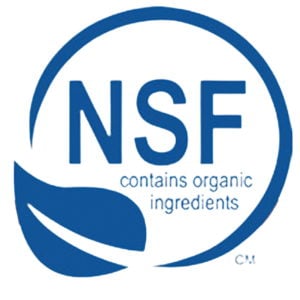
NSF certifies an array of materials like dietary supplements, water filters, dishwashers, pumping components, pool equipment, cosmetics and more.
When it comes to personal care, we are specifically looking at the NSF / ANSI 305: Personal Care Products Containing Organic Ingredients standard. This standard was developed with the help of Whole Foods in an attempt to remedy the conundrum that traditional certification programs (like USDA Organic) were designed for food, not personal care. If a product is certified NSF contains organic ingredients, it ensures that said product contains at least 70% organic ingredients (70% by weight after water and minerals are removed).
One thing to note is that this is one of the more recognized standards written specifically for cosmetics. This standard encourages greater participation in the manufacturing of personal care products using organically grown ingredients.
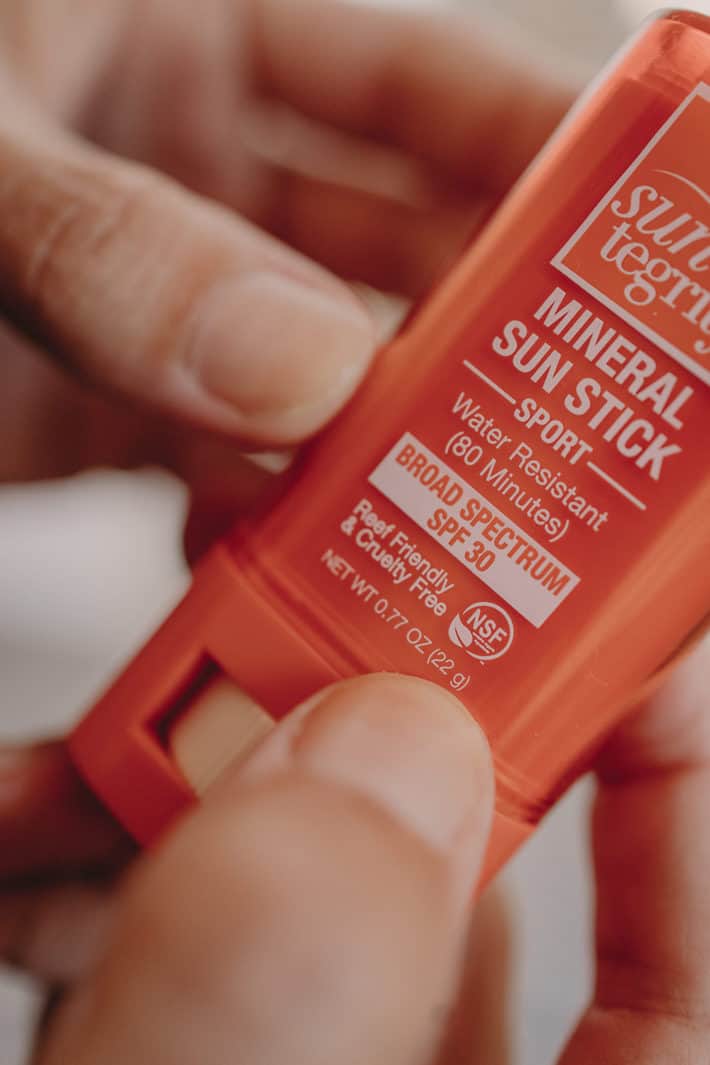
NSF also prohibits several processes, including:
- alkoxylation,
- ethoxylation,
- propoxylation,
- bleaching,
- determination (other than steam),
- halogenation (as main reaction),
- ionizing radiation,
- sulphonation (as main reaction),
- no sewage sludge or
- treatments using mercury or ethylene oxide.
Additionally, this standard addresses issues around chemical processes, terminology, commercial availability for ingredients, product composition, ingredient calculations and labeling. In other words, it’s legit.
NSF Strengths:
- Certification.
- Accredited.
- Annual audit required.
- Some processes are prohibited.
- Ingredient review required.
- Composite formula review required.
- Label review required.
- Manufacturing cleaning product review required (between batches in manufacturing).
- No petrochemical based ingredients may be used unless they are specifically on the “allowed list” (for example, sulfur is not available from any other source).
- No GMO ingredients.
NSF Weaknesses:
- 11 ingredient categories and 42 individual ingredients banned.
- No packaging review required.
- No required environmental considerations.
- Cost is on par with COSMOS, but slightly cheaper.
European Union Reach Program

The REACH program is a bit different than the other certifications we’ve just detailed out. Mainly it differs because it’s not actually a certification. Every time you hear or see someone talking about how “the EU bans 1600+ ingredients etc…” this is THAT.
More specifically, the European Union Reach Program is a registration program designed to improve the protection of human health and the environment through better identification of the properties of chemical substances.
What this means is that personal care products marketed in the EU need to be registered. Registration requires providing information about safety assessments on the ingredients, compositions and more.
This puts all the onus on the brand owners (or any responsible person representing the company) to submit all information. And this is just to get on the shelves in an EU market.
Because this is a registration program, accreditation, packaging review, cleaning product review, environmental considerations do not apply.
In addition, it doesn’t involve a manufacturing and overall brand audit on an annual basis to ensure the brand’s adherence to EU REACH standards—and registration is only required once. If a brand changes its label, the brand will have issues with export / import in the EU. Brands are legally responsible to let the EU Reach know of any changes and to re-register. However, that onus is on the brand—EU Reach isn’t responsible to check in with the brand regularly.
This also means that companies (brands) that want a “certification” need to obtain it through a third-party company (like the ones we’ve listed above). Some examples of these third party certification bodies are: ECOCERT, BDIH and Soil Association.
European Union Reach Program Strengths:
- 1644 restricted ingredients.
- Every personal care product sold in the EU must be registered and meet the safety requirement standards of this program.
- Cost depends on the annual revenue of the company.
European Union Reach Program Weaknesses:
- Reach is not a certification program. It’s a product registration program.
- Only applies to products sold in the EU.
- Brands are responsible for re-registering any formula changes.
RELATED: How do better beauty brands choose their beauty certifications? We asked nearly 20 brand founders—here’s what they said.
Retailer-Specific Standards
These standards are slightly different from the above because they exclusively review products and brands for sale in their own retail stores. So, if a brand isn’t applying to be sold at Whole Foods (or Credo Beauty or Sephora, etc.), they won’t be considered for these labels.
Also, these labels don’t actually appear on products’ packaging—meeting these retailers’ standards merely means that the product can be sold in their stores…or is classified as “clean” by that store (ex. “Clean at Sephora”).
Whole Foods Premium Body Care
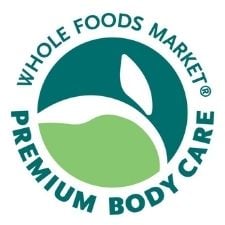
Amazon-owned Whole Foods prohibits 140 ingredients storewide (36 of which match the EU’s Reach Program restricted list), while The Whole Foods Premium Body Care standard prohibits “100+ ingredients and counting.” Whole Foods maintains that their Premium Body Care standard goes “beyond clean beauty” and is “the best there is.”
Their major selling point is they won’t allow a brand on their shelves to use the word “organic” on the front of their packaging unless it is legit certified organic by either USDA Organic or NSF/ANSI 305. Seems like that should be the case across the board for all standards, but we found that it’s not.
The Whole Foods Premium Body Care program is not a certified or accredited standard, which means there is no third-party oversight on their regulations or ingredients chosen based on their regulation. Whole Foods Premium Body Care is a verification process only. Again, this means it doesn’t involve a manufacturing and overall brand audit on an annual basis to ensure the brand’s adherence to Whole Foods standards.
Whole Foods Premium Body Care Strengths:
- Ingredient review is conducted against Whole Foods’ own prohibited list of ingredients.
- 140 (36 of which match EU prohibited list) ingredients are prohibited. Premium Body Care standard identifies 100+ prohibited ingredients.
- Currently, 4,000 products are formulated to Premium Body Care Standards.
- Free.
- Mandatory compliance in order to claim Whole Foods Premium.
Whole Foods Premium Body Care Weaknesses:
- Not accredited.
- A verification, not a certification.
- No required annual audit.
- No specified prohibited processes.
- No ingredient review. Any ingredient is accepted if it’s not on the WF prohibited list.
- No required composite formula review.
- No required packaging review.
- Cleaning products used in manufacturing are not reviewed.
- No specific environmental considerations.
Clean + Planet Positive/Clean at Sephora
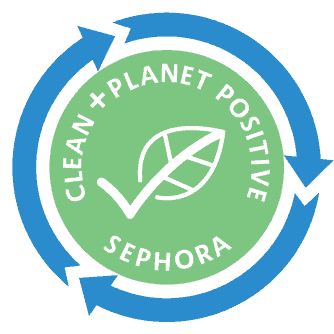
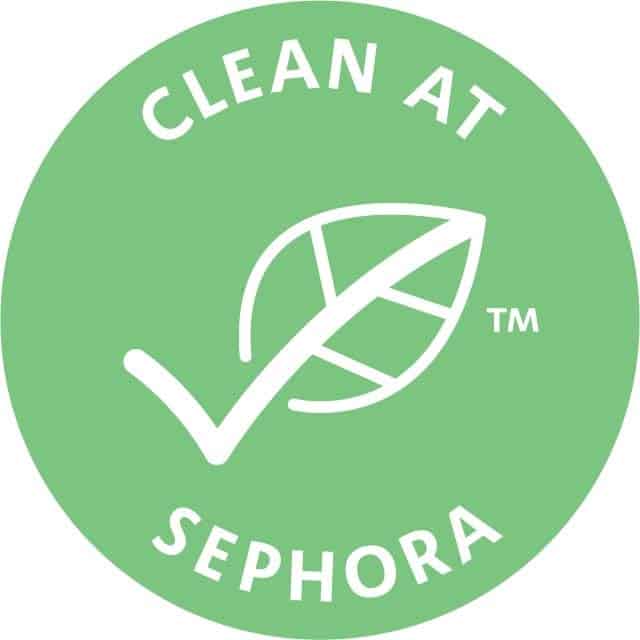
Sephora is a French multinational retailer of personal care and beauty products owned by LVMH (Moet Hennessy Louis Vitton SE). They offer 3000+ brands, including a private label.
Sephora currently promotes two better beauty programs. Their Clean at Sephora™ program features “brands formulated without phthalates, formaldehyde, formaldehyde releasers, oxybenzone, octinoxate and more.”
And their newly released Clean + Planet Positive program, which Sephora is calling “beyond clean.” This program takes into consideration not only ingredients but also the environmental impact of products through the lens of climate commitment, sustainable sourcing, responsible packaging and environmental giving.
Through both of these programs, Sephora currently restricts roughly 41 ingredient categories with multiple ingredients in each category.
It’s interesting to note that Sephora amends, “‘formulated without’ does not guarantee ‘100% free from’ since trace contaminants are possible. It is not the intention of Clean at Sephora™ to test for trace contaminants or guarantee 100% free-from…”
Clean at Sephora™ is another verification process only—it doesn’t involve a manufacturing and overall brand audit on an annual basis to ensure each brand’s (or product’s) adherence to Clean at Sephora™ programs.
Clean at Sephora™ Strengths:
- Ingredient review is conducted against Sephora’s own prohibited list of ingredients.
- Restricts 41 ingredient categories, with multiple ingredients in each category.
- Packing review included for the Clean + Planet Positive program.
- Environmental considerations included for the Clean + Planet Positive program.
Clean at Sephora™ Weaknesses:
- A verification, not a certification.
- Not accredited.
- No required annual audit.
- No prohibited processes.
- No ingredient review. Any ingredient is accepted if it’s not on the Clean at Sephora™ prohibited list.
- No required composite formula review.
- Cleaning products used in manufacturing are not reviewed.
- For the Clean at Sephora program (not Clean + Planet Positive): No packaging review or specific environmental considerations.
Credo Beauty
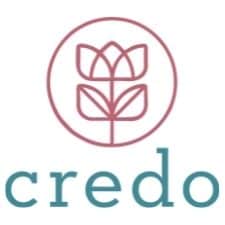
Founded by two former Sephora executives, Credo Beauty claims they have “the strongest standards in retail today.”
Credo bans 2700+ ingredients, which they detail out in The Dirty List. It’s interesting to note that 259 of these ingredients match the EU Reach Program’s restricted list. They also continue the conversation about what clean beauty means to Credo via The Credo Clean Standard.
The Credo Standard is also pushing hard for radical fragrance transparency. Meaning they have challenged all 120 brand partners to fully disclose all fragrance ingredients. 71 have complied and now full fragrance ingredient lists are visible on the Credo website…even if they are not on the brand’s packaging yet 😱. And as a bare minimum, brands must categorize the type of fragrance they use, i.e. essential oils, certified organic, synthetic, etc.
Credo does prohibit some processes, including:
- alkoxylated,
- ethoxylation (with the exception of 1% or less phenoxyethanol),
- butylation,
- perfluorinated chemicals and
- treatments using ethylene oxide.
It’s also worth noting that Credo Beauty is a verification process only—it doesn’t involve a manufacturing and overall brand audit on an annual basis to ensure the brand’s adherence to Credo’s standards.
Credo Beauty Strengths:
- Ingredient review is conducted against Credo’s own prohibited list of ingredients.
- 2700+ total ingredients are restricted, divided into 16 categories. 259 of the ingredients match the EU Reach Program’s restricted list.
- Prohibits some processes.
- Packaging review.
- Brands are required to use official ingredient terminology (called INCI) and ingredient source codes where possible.
- Brands are required to conduct basic consumer safety and product stability testing.
- Brands are required to back up product and ingredient claims.
Credo Beauty Weaknesses:
- A verification, not a certification.
- Not accredited.
- No annual audit.
- Cleaning products used in manufacturing are not reviewed.
- Allows (but restricts) use of synthetic fragrance and colors and silicones.
- Environmental considerations are emerging.
BeautyCounter
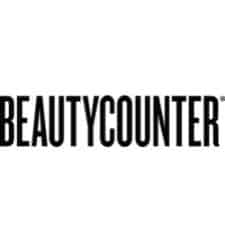
BeautyCounter is a for-profit multilevel marketing skincare + makeup company, where independent consultants pay to join and sell products under the BC brand. Majority BeautyCounter stakeholder is Carlyle Group Holdings ($200B+ investment group).
BeautyCounter claims 1800 ingredients banned (1400 of which match the EU Reach Program’s restricted list). It’s interesting to note that most of these ingredients are not identified in their literature. In fact, only 17 BeautyCounter banned ingredients are visible online via their Never List (10 of which match the EU Reach Program’s restricted list).
It’s also worth noting that BeautyCounter is a brand, not a standard, not a verification and not a certification.
BeautyCounter Strengths:
- Has a proprietary 5-step ingredient review process that checks against 23 safety assessments (i.e. carcinogens, etc.).
- 12 packaging materials are identified as prohibited. Secondary cartons are all FSC certified.
- Two-part (during formulation and post-formulation, for every product run), third-party heavy metals testing for color cosmetics.
- Published environmental considerations.
BeautyCounter Weaknesses:
- Only considers products under their brand name (BeautyCounter).
- No public annual reporting/audit. BeautyCounter ‘Quality Team’ performs site inspections of their sites—but there’s not publicly available information on regularity or reporting.
- A verification, not a certification.
- Not accredited.
- No specified prohibited processes.
- Cleaning products used in manufacturing are not reviewed.
- Claims to have 1800 ingredients restricted (1400 of which match EU), but the remainder of ingredients are not identified in literature. 17 restricted ingredients are visible online (10 of which match the EU Reach program’s prohibited list).
- 147 synthetic origin ingredients identified in their products (note: synthetics aren’t inherently a potential issue, but worth noting).
Beauty certifications pocket guide
To get this simplified guide + the full infographic delivered straight to your inbox for easy viewing (and high quality!), click here.
Our certification research process
As you can tell, this was a beast of a topic. It’s been a work in progress for more than four months, and we recruited a whole team to work on both identifying and researching the ins and outs of each certification we detailed out here. We worked hard to ensure accuracy and remain as unbiased as we could, so you can use this beauty standards guide WITH CONFIDENCE.
But you’ll also notice that this list isn’t exhaustive. Instead of doing a shallow dive into every.single.standard. (and there many), we chose to highlight the most popular / well-known labels, brands and retailers in the United States. Krupa’s expertise and our team’s decade-long experience in the industry led us to the specific certifications included above because as a U.S.-based blog, we see these most frequently when we’re sampling beauty and personal care products.
And, there’s more to come. This is the first of a three-part series about beauty and personal care certifications—we also talked to brands about how they choose a certification process (or why they opt out) and we’ll be sharing our team’s picks for which certifications we most rely on and recommend soon. Stay tuned!
A note from Lisa
A big thank you to Emily Barth Isler for getting the ball rolling on this post, delivering major contributions and insights from brand founders and industry experts. Your sticktoitiveness and tenacity put this project on the map with the momentum it needed to move forward.
A huge thank you to Nicolle Mackinnon for keeping us on schedule, being an incredible sounding board and bringing a wealth of knowledge to streamlining a project of this scope.
A standing ovation for Krupa Koestline who poured herself into this post, bringing years of experience in beauty formulating, a discerning eye and the knowledge to a topic that seems impossible to capture and make sense of on paper. I learned so much from you and I am so grateful for your voice here.
And thank you to Claire Molyneaux for being the kingpin in making this research project visually accessible and digestible and taking one for the team with edits upon edits upon edits. You rock!
…..Oh, and taking Jamie Tartt’s lead, “ME!” lol.
Why you should trust us
Like we mentioned, we couldn’t have done this without the full team’s support. Here’s a peek into the people behind the work—and why this guide should be bookmarked, shared and saved for your reference.
Krupa Koestline
Starting her 10+ year career at Estee Lauder and Neutrogena, Clean Cosmetic Chemist Krupa Koestline pivoted her focus to creating safer products after seeing firsthand the impact of potentially harmful ingredients used in personal care products. As the founder of KKT Consultants, Krupa understands the importance of innovation in today’s competitive and saturated beauty market.
By taking inspiration from an array of industries ranging from food and wellness to even automobiles and toys, Krupa is able to design breakthrough products, whether it’s a new mascara with a radical preservation strategy or a skincare serum with a cutting-edge actives profile.
Prior to KKT Consultants, Krupa’s corporate roles have included VP of Product Development at a leading US manufacturing company and Chief Product Officer at Pure Haven. Krupa holds a Master of Science degree in Biology, with a Bachelor of Science in Biotechnology, as well as a Business Certificate in Marketing from Cornell University. She is active in organizations such as the Organic Trade Association, GRMA, Natural Products Association, Green Chemistry Council and the Society of Cosmetic Chemists.
Emily Barth Isler
Emily Barth Isler lives in Los Angeles with her husband and their two kids. A former child actress, she performed all over the world in theatre, film and TV. Emily writes about sustainable, eco-friendly beauty and skincare for magazines and websites such as Organic Spa and Allure, and also writes novels for kids and families. Her debut Middle Grade novel, AfterMath, was published in September 2021 by Carolrhoda/Lerner Books, and she has also written web sitcoms, parenting columns and personal essays. She has a B.A. in Film Studies from Wesleyan University, and really, really loves television. Find her at www.emilybarthisler.com and on Twitter and Instagram at @emilybarthisler.
Claire Molyneaux
With a career history as a buyer and merchandiser, design and aesthetic are in Claire Molyneaux’s blood. She’s the original founder of The Clean Beauty Box, a graphic designer who incorporates her expertise into every detail of her work and TNK’s Content + Design Manager. Almost a decade ago, she found herself navigating the transition from conventional beauty products to clean. Years of allergies, annoyed skin and autoimmune disorders had opened her eyes to what she was putting on her skin… and she was horrified. What started as a personal mission to switch to healthier, safer beauty products became a lifestyle and desire to create awareness.
Nicolle Mackinnon
Nicolle is TNK’s Content Manager, a former magazine editor who has spent the last decade working with brands to conceptualize and implement effective messaging via website, blog, newsletter and social content. She manages TNK’s editorial, and supports Lisa’s vision.
Coming off of a gig as the editorial assistant for the authors of No More Dirty Looks, her clean-beauty bible, she built her own content marketing business in the wellness industry to empower women and men to take charge of their health, learn more about what they’re putting in and on their bodies and, ultimately, make the world a healthier, happier place.
Lisa Fennessy
Founder of The New Knew. Read more about Lisa.
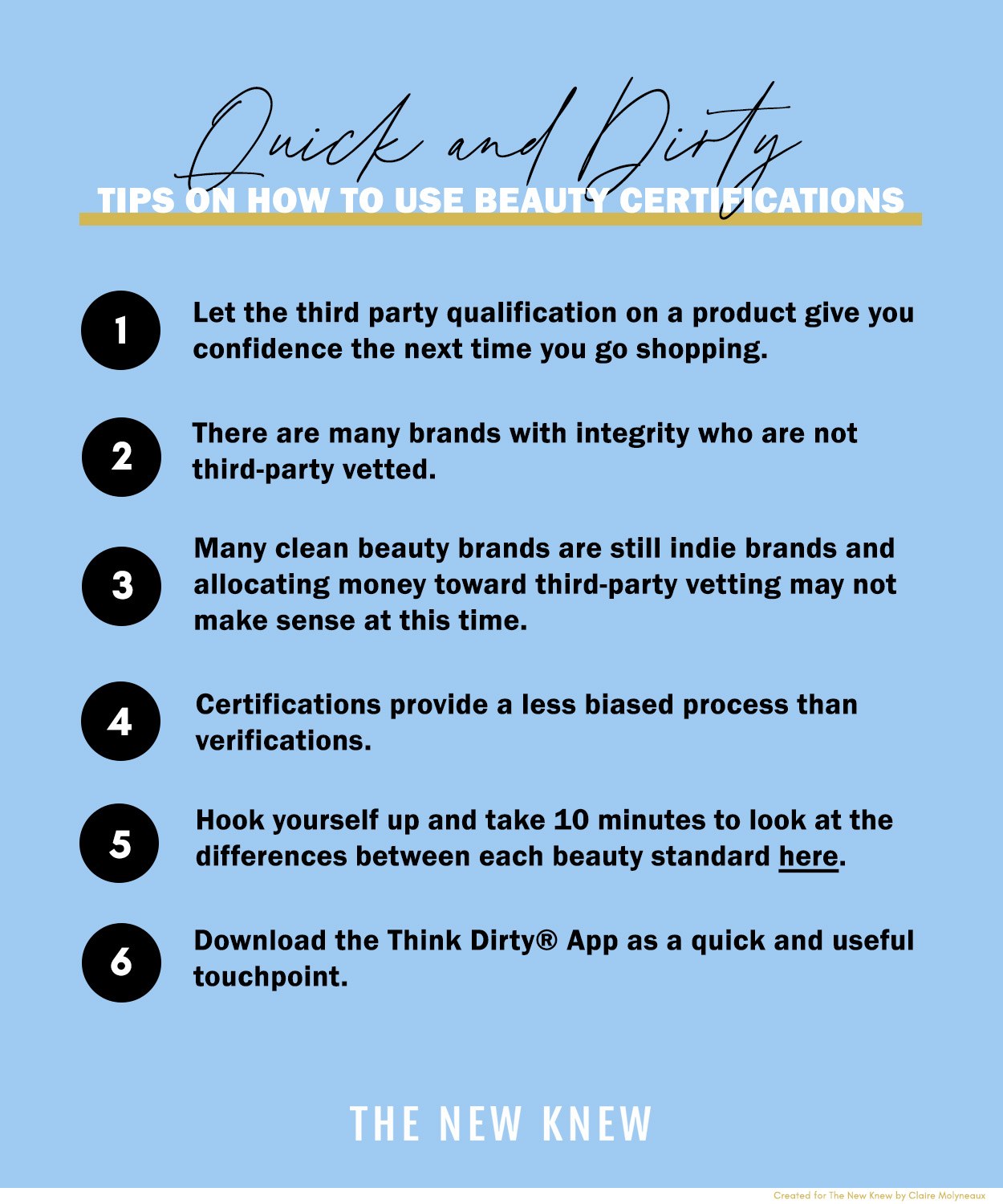


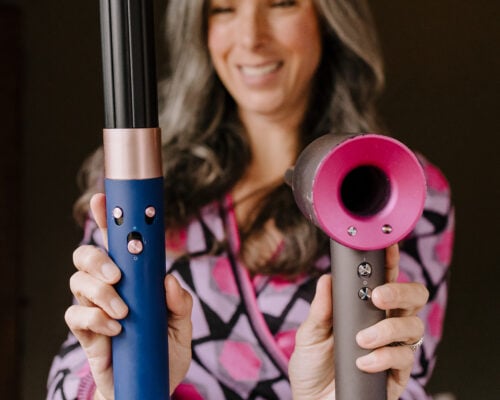
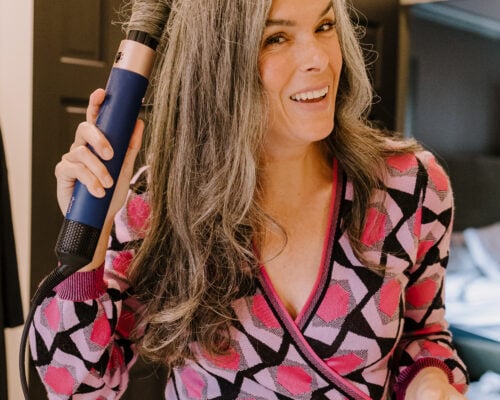
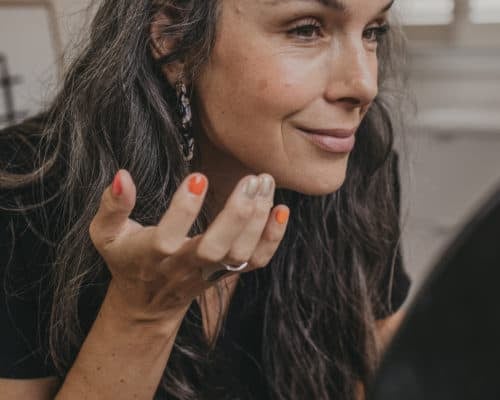
Jana Madsen
September 23, 2021This is great info and I really appreciate the care that was taken in putting this together but I’m super puzzled about why Beautycounter is included. They are a brand (like RMS Beauty, Ilia, or TrueBotanicals), not a certification. Their “Blueprint for Clean” is just a set of principles that they use to define clean beauty and their own actions toward those goals/ideals; no other company could earn Blueprint for Clean certification because that’s not a thing. It’s just a phrase that embodies their approach to clean beauty. You can’t dock them for only considering how only THEIR products meet their own goals, many of which are EWG-verified.
Lisa Fennessy
September 27, 2021Hi Jana! Thanks for this! I included them because it brings another layer to the discussion. I think it’s a good way to illustrate that there are certifications, then there are verifications then there are retailer standards and then brand standards. Personally, I was curious to know the difference between all of these – which is the reason why we invested in writing this post. It’s so much easier to see now that YES (!) BC is its own brand and should not be measured against a certification…I don’t think that was clear to me before we started digging into this post. They talk a lot about the ingredients they band and I really wanted to know what that meant. I like being able to see it mapped out on paper like this. It’s easier for me to understand and I think it’s probably easier for others to understand too. xo, Lisa
Marc de Mul
October 1, 2021Thank you for this excellent review of ingredient certifications. In addition to the ones you mentioned, there are several certifications relating to carbon impact of a formula and its packaging and manufacturing process. Climate Neutral (climateneutral.org) is an example although I’m not sure if it’s still in business. Another is Carbon Neutral (https://www.scsglobalservices.com/services/carbon-neutral-certification) and there are several others. There isn’t one that has found traction with consumers yet. Recently Unilever, L’Oreal and other global brands announced that they would work together on a certification so we will have to see where that leads. It would be wonderful if consumers could select products based on their ingredients and climate impact.
Lisa Fennessy
October 1, 2021Hi Marc! Great add. Thanks so much for this insight and I agree, reducing climate impact is so important. Thank you! Lisa
Melanie Treadaway
April 8, 2022Hi Lisa! I’m the one who has been bombarding you with questions. Short story, I was diagnosed with Celiac several years ago but forgot. Crazy I know but at the same time I had a 5 cm cancerous polyp that ended with 7 cm of my rectum being removed. Then 2 rare blood clots that had me near death. Multiple surgeries and a car wreck with a major concussion and back/neck injuries. I feel like such a fool so I had to somewhat explain myself. Anyway, at 55 I am sick and tired of being and feeling sick and tired. Can you suggest any celiac resources? Also, I know there is gluten in most every. Are “clean” beauty products gluten free? I’m assuming it is important to stay away from all gluten, even in skincare and makeup? I’m a total girl who loves my lotions and potions. I apologize for bombarding you but there is so much information out there and I also have adhd and am completely overwhelmed. My brain hurts. I saw you are from around Atlanta and I just latched on. Lol. I live in Peachtree Corners. I am so appreciative for all you do!! I am feverishly reading your blog. It seems I need to change everything. I have a son who is vegan so I’ve been eating a lot of his food. But I need to do better checking ingredients. And both of our sons are getting their phd’s and moving out in the summer. I’ll be on my own. Lol. Again I apologize for all the questions. I’m simply overwhelmed but ready and rather desperate to make changes now. I’m ready to start living again. Thank you again!!
Lisa Fennessy
April 9, 2022Hi Melanie! I’m so sorry all of this has happened to you. It sounds like you have been through A LOT. “Clean beauty” in general does not consider gluten. This will be something you will have to look out for in each product. Sometimes this info is listed on the product page, sometimes it’s not. I would love to connect you with STAT Wellness in Atlanta. They mix functional and western medicine and have been effective providers for me and my husband. I also love following along with Downshiftology for gluten free recipes. I don’t know of any specific gluten free, clean beauty skincare blogs. Hope this helps. And feel free to reach out anytime! xo, L
Melanie
April 9, 2022Hi Lisa! I hope you had an amazing trip! Loved following along on your stories. My youngest son has been a die hard Juventus soccer fan (Pirlo for life!) and we hope to take him one day. So happy to see gluten free is abundant there. Thank you for the information as well. I will absolutely check into all. Are the products you use gluten free? Your skin glows so I’ll just copy you if so. So much to consider. Maybe I’ll look into how to blog and try a clean gluten free page. I’m glad you noted there are none because I thought I was not using the correct terminology when searching. Thank you for everything again! And while I have had many health issues, I am still living the best, most blessed life ever. And since there is no known cause for my blood clots yet, although hematologist is leaning towards an as of yet unknown blood disorder, after reading up on clean living I’m thinking it’s all that plastic leached into my blood over the years stopping things up. Lol!!